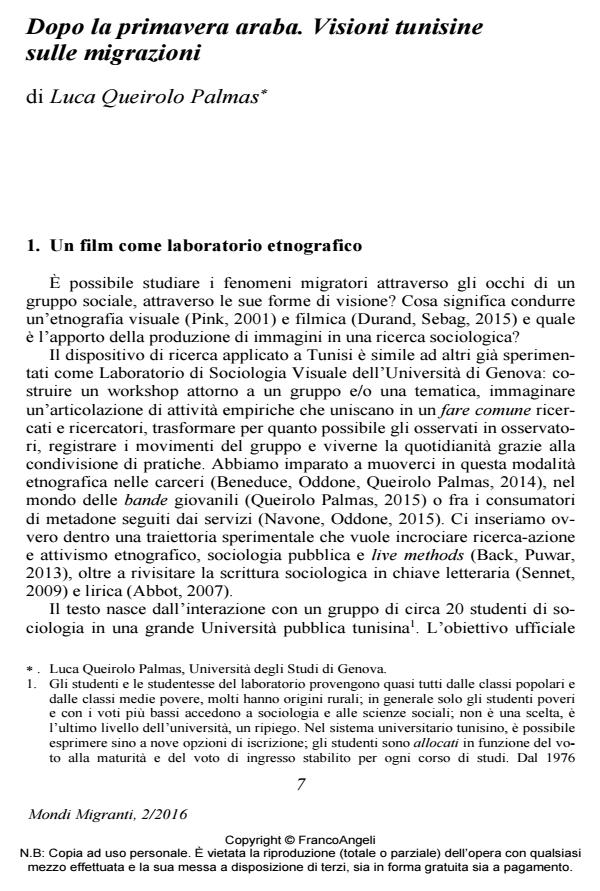After the Arab Spring. Tunisian Gazes on Migrations
Journal title MONDI MIGRANTI
Author/s Palmas Luca Queirolo
Publishing Year 2016 Issue 2016/2
Language Italian Pages 27 P. 7-33 File size 316 KB
DOI 10.3280/MM2016-002001
DOI is like a bar code for intellectual property: to have more infomation
click here
Below, you can see the article first page
If you want to buy this article in PDF format, you can do it, following the instructions to buy download credits

FrancoAngeli is member of Publishers International Linking Association, Inc (PILA), a not-for-profit association which run the CrossRef service enabling links to and from online scholarly content.
The article explores the phenomenon of migrations through a visual and filmic ethnography on youth generations that were in the front line during the Arab spring of 2010/2011. Using the dialogical and participatory field opened up by the co-writing of a sociological film, the research focuses on four still-frames: the forced deportation, the illegal crossing of the Mediterranean sea, the struggle for visa, the border games. 5 years after the revolution, the country appears to the disenchanted eyes of youth, mainly those coming from lower classes, as an open sky prison, a place from where is difficult escaping in search of freedom and opportunity.
Keywords: Arab Spring; filmic ethnography; Tunisia; youth; migration; border
Palmas Luca Queirolo, Dopo la primavera araba. Visioni tunisine sulle migrazioni in "MONDI MIGRANTI" 2/2016, pp 7-33, DOI: 10.3280/MM2016-002001